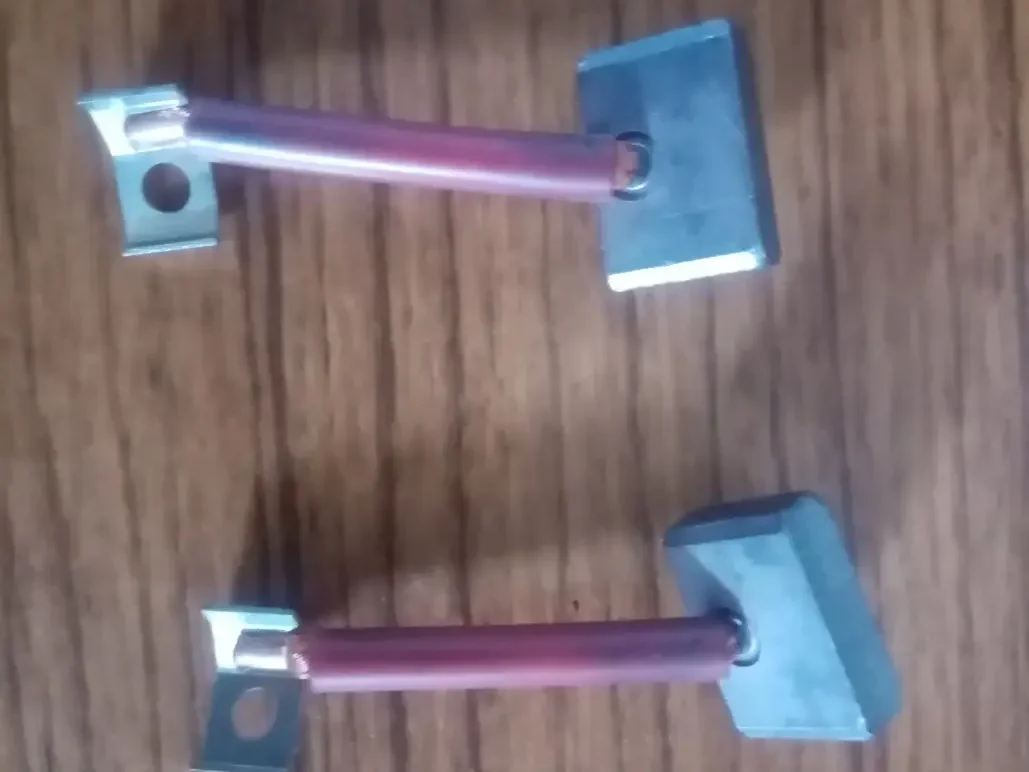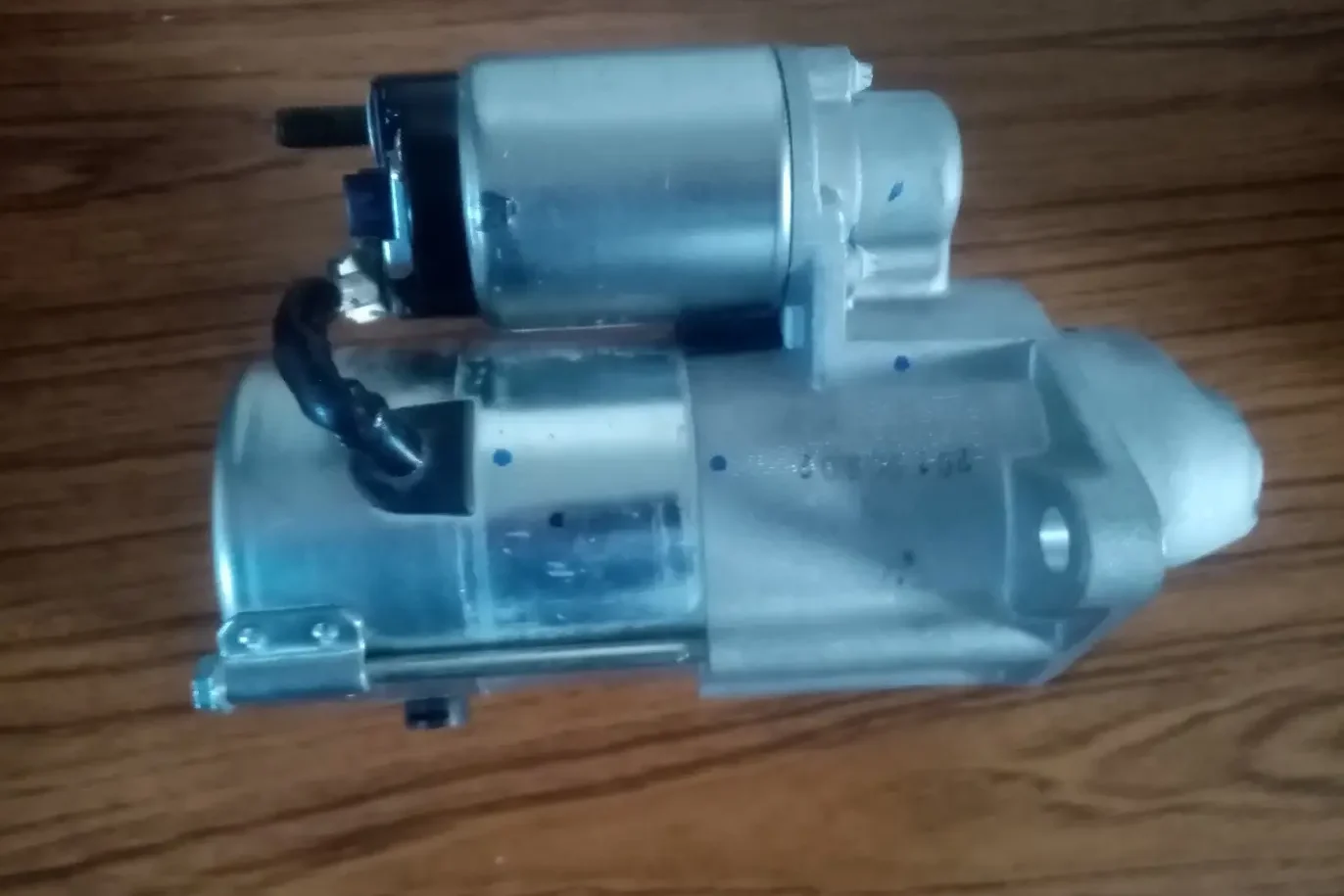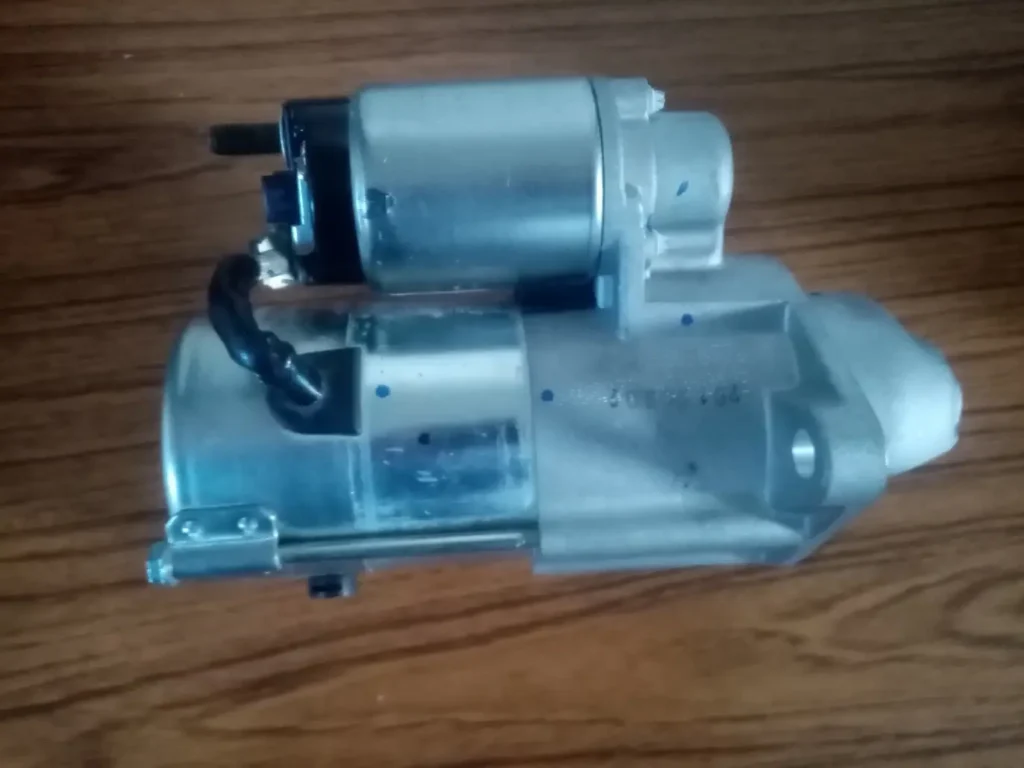You turn the key, and instead of your engine roaring to life, you hear… a single click. Or worse—a slow, struggling crank that gets weaker every day. As an electromechanic with 17 years of experience, I’ve fixed hundreds of failed starters, and most failures could’ve been caught weeks before they left drivers stranded.
This guide will show you:
✅ The 7 most common starter problems (including the brushes, bendix, and bushings, most guides miss)
✅ Where your starter is located (with simple diagrams for DIY checks)
✅ How to start a car with a bad starter (emergency tricks that work)
✅ FAQs (including repair costs & how to confirm a bad starter)
If your car is clicking when trying to start, hesitates to crank, or is slow to start, keep reading—this could save you hundreds in repairs.
Table of Contents
Where Is the Starter Located?
The starter is mounted near the engine’s flywheel (automatics) or clutch (manuals). Common positions:
- Front-engine cars: Lower side, near the transmission
- Rear-engine cars: Behind the engine, near the firewall
- Some FWD models: Under the intake manifold (harder to reach)
Pro Tip (From 17 Years in the Shop): Follow the thick red cable from the battery—it leads straight to the starter.
🔧 7 Common Car Starter Problems (Symptoms & Fixes)
1. Worn Brushes (Most Common Failure) (French: Charbons)

🔴 Symptoms:
- Intermittent starting (works sometimes, fails others)
- Weak cranking (engine turns slowly, even with a good battery)
- Black dust near the starter (brush material wearing out)
🛠️ Fix:
- Open the starter & replace the carbon brushes (~$20 part)
- If brushes are worn down to 3mm or less, they MUST be replaced
2. Bendix Drive Failure (French: Bendix)
🔴 Symptoms:
- Spinning noise but no crank (starter motor runs, but doesn’t engage the flywheel)
- Grinding during startup (worn gears not meshing properly)
- Starter stays engaged (keeps running after engine starts)
🛠️ Fix:
- Replace the Bendix drive assembly (~50-150$)
- Check the flywheel teeth for damage

3. Solenoid Failure (Clicking But No Crank)
🔴 Symptoms:
- Loud single click when turning the key
- No engine movement (just a “clunk” sound)
- Sometimes works after multiple tries
🛠️ Fix:
- Test the solenoid with a multimeter (should get 12V when key is turned)
- Replace the solenoid or entire starter if faulty
4. Bad Bushings (Copper Centering Ring Failure) (French: Bague en cuivre de centrage)
🔴 Symptoms:
- Starter wobbles or makes a whining noise
- Slow, labored cranking (even with a good battery)
- Starter gets excessively hot
🛠️ Fix:
- Replace the starter bushings (requires disassembly)
- If bushings are worn, the armature can drag, killing the starter
5. Bearing Failure (French: Roulements)
🔴 Symptoms:
- Grinding or screeching noise when starting
- Starter struggles to spin (sounds labored)
- Gets worse over time
🛠️ Fix:
- Replace the starter bearings (or the whole starter if badly damaged)
6. Worn Starter Motor (Slow or Weak Cranking)
🔴 Symptoms:
- Engine turns over sluggishly (like a dying battery, but battery is good)
- Grinding noise during startup
- Gets worse in cold weather
🛠️ Fix:
- Check battery voltage first (must be 12.6V+)
- If voltage is good, rebuild or replace the starter motor
7. Corroded Starter Connections (Intermittent Starting)
🔴 Symptoms:
- Car sometimes starts, sometimes doesn’t
- Visible corrosion on battery terminals or starter wires
- Voltage drops when cranking
🛠️ Fix:
- Clean battery terminals & starter connections with baking soda + water
- Tighten all connections securely
🚗 How to Start a Car With a Bad Starter (Tested Emergency Methods)
When your starter fails unexpectedly, these shop-proven techniques can get you home or to a repair shop:
1. The Starter Tap Method
(Works for stuck solenoids or worn brushes)
- Locate the starter (follow battery positive cable)
- Use a solid metal tool (wrench/hammer)
- Tap the starter body firmly but not aggressively 2-3 times
- Why this works: Often frees stuck brushes or solenoid plunger
- Pro Tip: Tap near the solenoid first, then motor housing
2. Direct Power Bypass
(For complete starter failure)
- Turn ignition to “ON”
- Connect jumper cable:
- Positive (+) to starter’s main power terminal
- Negative (-) to clean engine ground
- Briefly touch cable to battery positive
- Critical Safety: Ensure car is in Park/Neutral!
- From Experience: Works 80% of time if solenoid is bad
3. Push-Start (Manual Transmissions Only)
- Turn ignition ON
- Press clutch, put in 2nd gear
- Get car rolling (5-10 mph)
- Quickly release clutch while giving gas
- Why 2nd gear? Less jerking than 1st
- Shop Note: Won’t work if battery is completely dead
⚠️ Important Warnings:
- These are STRICTLY TEMPORARY fixes
- Repeated use can damage:
- Flywheel teeth (from excessive tapping)
- Wiring (from bypass attempts)
- Have starter properly repaired within 48 hours
*(Methods verified through 17 years of field testing – not theoretical solutions)*
🔌 Starting Circuit Diagnosis: Battery to Starter Step-by-Step
*(By a 17-Year Electromechanic)*
When your car won’t start, the problem could be in any part of the starting circuit. Here’s exactly how to diagnose each component and confirm if the starter is truly bad.
1. Battery Check (First Step!)
🔧 How to Test:
- Measure voltage with multimeter:
- 12.6V+ = Good
- 12.0-12.5V = Weak (recharge & retest)
- <11.9V = Dead/Defective
- Load Test:
- Voltage shouldn’t drop below 9.6V when cranking
✅ Good Battery But No Start? → Move to Next Step
2. Ignition Switch Test
🔧 How to Test:
- Turn key to “ON” (not start) – check if dashboard lights appear
- Listen for fuel pump humming (2-3 seconds)
- Use multimeter to test for 12V at starter solenoid wire when key is turned to “START”
⚠️ No Power? Possible Issues:
- Faulty ignition switch
- Broken wiring
- Bad transponder chip (security system)
3. Fuse & Relay Check
Location: Main fuse box (usually under hood/dashboard)
🔧 How to Test:
- Locate starter relay (check owner’s manual)
- Swap with identical relay (e.g., horn relay)
- Check starter fuse (typically 20-40A) with multimeter
🔴 Bad Relay Symptoms:
- No click when turning key
- Intermittent starting
4. Starter Circuit Wiring Inspection
🔧 What to Check:
- Battery cables (corrosion/breaks)
- Ground connections (engine to chassis)
- Starter solenoid wire (should get 12V when cranking)
💡 Pro Tip: Clean all connections with baking soda + water if corroded
5. Final Starter Test (How to Confirm It’s Bad)
🔧 Definitive Tests:
- Voltage Test:
- 12V+ at starter main terminal when cranking?
- Yes, but no crank → Bad starter
- Direct Power Test:
- Use jumper cable from battery (+) to starter terminal
- If it cranks → Problem is upstream (relay/switch)
- If no crank → Starter is dead
✅ 100% Confirmed Bad Starter If:
- Gets power but doesn’t engage
- Makes grinding/whining noises
- Bench test fails (remove & test with jumper cables)
🧰 Starter Replacement Tips (From My 17 Years’ Experience)

- Before Removing:
- Disconnect battery negative
- Take photos of wiring connections
- Common Mistakes:
- Forgetting to shim the starter (some GM/Ford models)
- Overtightening mounting bolts (can crack housing)
- After Installation:
- Check flywheel teeth for damage
- Test start 3-4 times before closing up
📋 Diagnostic Flowchart Summary
Starter getting 12V+? → Yes but no crank = Bad starter
Battery voltage good? → No = Charge/replace
Ignition switch sending power? → No = Fix switch/wiring
Relay/fuse good? → No = Replace
Need More Help?
Describe your exact symptoms below with:
- Voltage readings
- What happens when you turn the key
- Any unusual noises
I’ll help pinpoint the issue based on real repair experience!
🔍 Other Reasons Your Car Won’t Start (Not the Starter!) – Electromechanic’s Diagnostic Guide
When your car refuses to start, don’t assume it’s the starter. Here are the most common culprits I’ve diagnosed in my 17-year career:
1. Dead Battery (The #1 Culprit)
- Test: Voltage below 12.4V (12.6V+ is ideal)
- Real-World Check: Headlights bright but dim when cranking? Battery issue.
- Pro Tip: Load test batteries over 3 years old monthly
2. Faulty Ignition Switch
- Symptoms:
- No dash lights when turning key
- Wiggling key sometimes works
- Quick Test: Check for 12V at starter solenoid wire when cranking
3. Blown Starter Circuit Fuse
- Where to Look:
- Main fuse box (check 30-40A starter fuse)
- Often labeled “ST” or “STRTR”
- Shop Trick: Swap with identical fuse to test
4. Anti-Theft System Lockout
- Telltale Signs:
- Security light flashing
- Starts then immediately dies
- Fix Attempt: Lock/unlock doors with key fob 3 times
5. Fuel Delivery Failure
- Diagnosis Steps:
- Listen for fuel pump hum (2 sec when ignition on)
- Check fuel pressure (most cars need 45-60 PSI)
- Smell gas at exhaust when cranking
6. Engine Ground Failure (Often Overlooked)
- Symptoms:
- Slow cranking with good battery
- Electrical gremlins
- Test: Voltage drop between battery (-) and engine block
7. Neutral Safety Switch Fault
- Common In:
- Automatic transmissions
- Clutch pedal switches (manuals)
- Test: Try starting in Neutral if Park fails
Emergency Diagnostic Tree:
- Do lights/dash come on? If no → Battery/ignition
- Does it click but not crank? → Starter circuit
- Cranks but no start? → Fuel/spark
- Starts then dies? → Security system
(Diagnostic methods proven through thousands of real-world repairs – not just textbook theory)
❓FAQs: Quick Answers to Starter Problems
1. How Do You Know Your Car Starter Is Bad?
✅ Signs include:
- Single click but no crank
- Slow, labored cranking
- Grinding noise when starting
- Intermittent starting issues
2. How Much Is a Car Starter Replacement?
💰 Cost breakdown:
- Starter motor only: 150–350$
- Labor (shop): 200–500$
- Total: 350–850$ (depends on car model)
3. Can a Bad Starter Drain a Battery?
❌ No, but a stuck solenoid can keep the starter engaged, killing the battery.
4. Will a Bad Starter Cause a Check Engine Light?
❌ Usually no, unless it affects the engine’s sensors.
5. How Long Does a Starter Last?
⏳ Average lifespan: 100,000–150,000 miles (but shorter in extreme climates).
🔧 Final Thought: Don’t Ignore Starter Problems!
A failing starter won’t fix itself—it’ll leave you stranded eventually. If your car is clicking when trying to start, hesitating, or grinding, diagnose it now before you’re stuck somewhere dangerous.
Need help? Drop your car’s make, model, and symptoms in the comments—I’ll help troubleshoot! 🚗💨
(Written by a 17-year electromechanic—no AI-generated fluff. Real fixes for real car problems.)


Pingback: Windshield Wiper Motor Problems? Expert Repair & Guide 2025
Pingback: Stuck Power Window? Car Window Motor Repair Made Simple
Pingback: Spark Plug Replacement Cost: The Ultimate 2025 Pro’s Guide
Pingback: Top 3 Reasons Your Car Won’t Start (But Battery Is Fine)